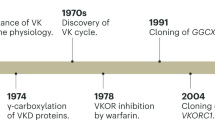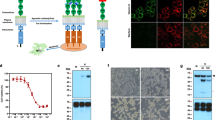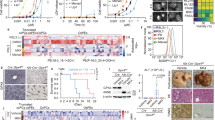Abstract
Reddy and Srinivasan1 have described a method for the estimation of vitamin K and vitamin K3 which is slightly different from that of Novelli2. During the course of our investigation on the biosynthesis of vitamin K in moulds, we found that the method of Reddy and Srinivasan was not suitable for determining microquantities of vitamin K. It was observed that, on standing, the intensity of the colour at the junction of the two layers increases, with the result that the intensity of colour is not uniform throughout the layer. In the present communication, we wish to describe a modified method which can be used to estimate vitamin K in the range 2–30 µgm.
This is a preview of subscription content, access via your institution
Access options
Subscribe to this journal
Receive 51 print issues and online access
$199.00 per year
only $3.90 per issue
Buy this article
- Purchase on SpringerLink
- Instant access to full article PDF
Prices may be subject to local taxes which are calculated during checkout
Similar content being viewed by others
References
Reddy, D. V. S., and Srinivasan, V., Curr. Sci., 17, 22 (1948).
Novelli, A., Science, 93, 358 (1941).
Author information
Authors and Affiliations
Rights and permissions
About this article
Cite this article
SATHE, V., DAVE, J. & RAMAKRISHNAN, C. Spectrophotometric Method for the Estimation of Vitamin K3 . Nature 177, 276 (1956). https://doi.org/10.1038/177276a0
Issue date:
DOI: https://doi.org/10.1038/177276a0



